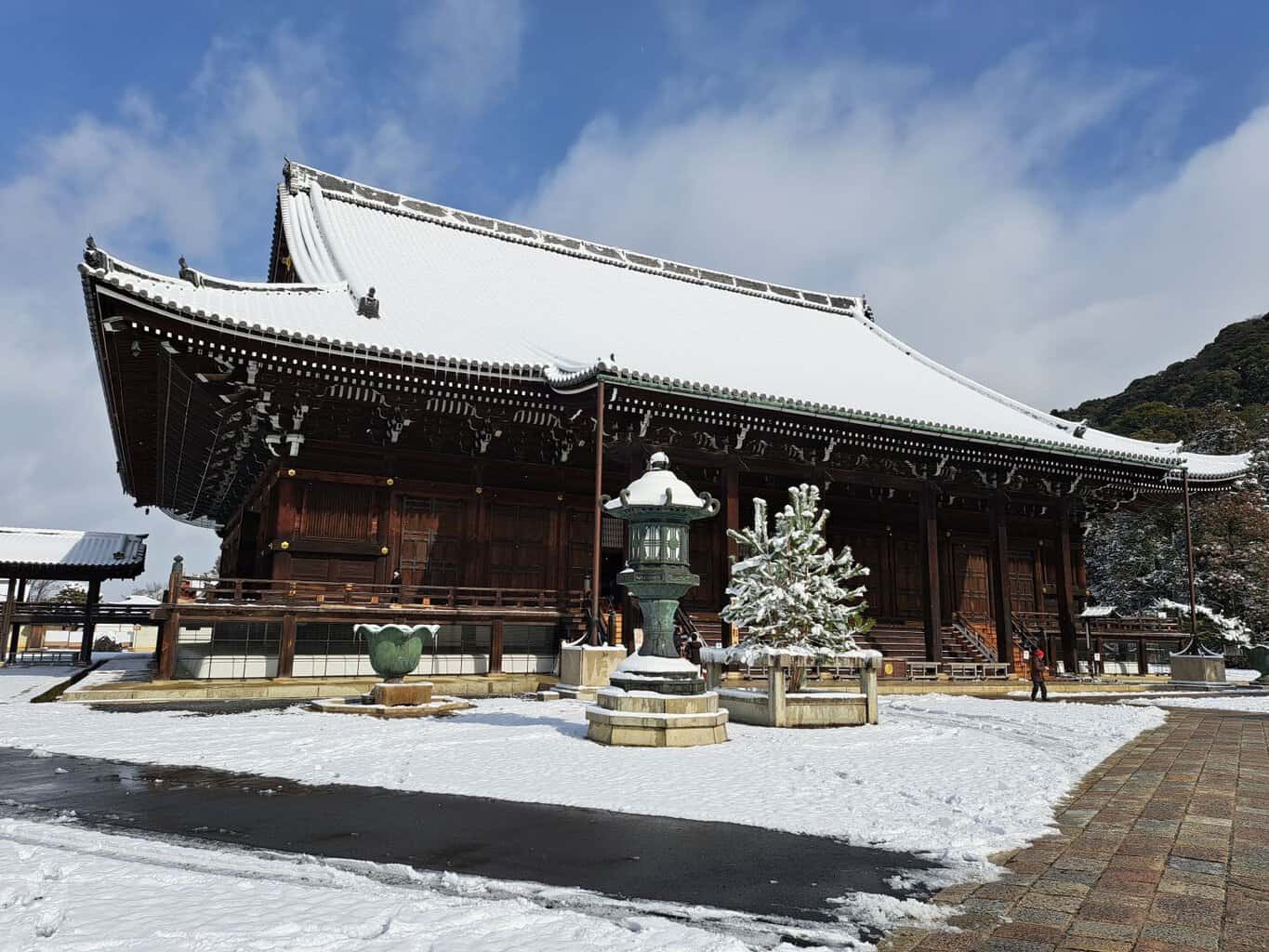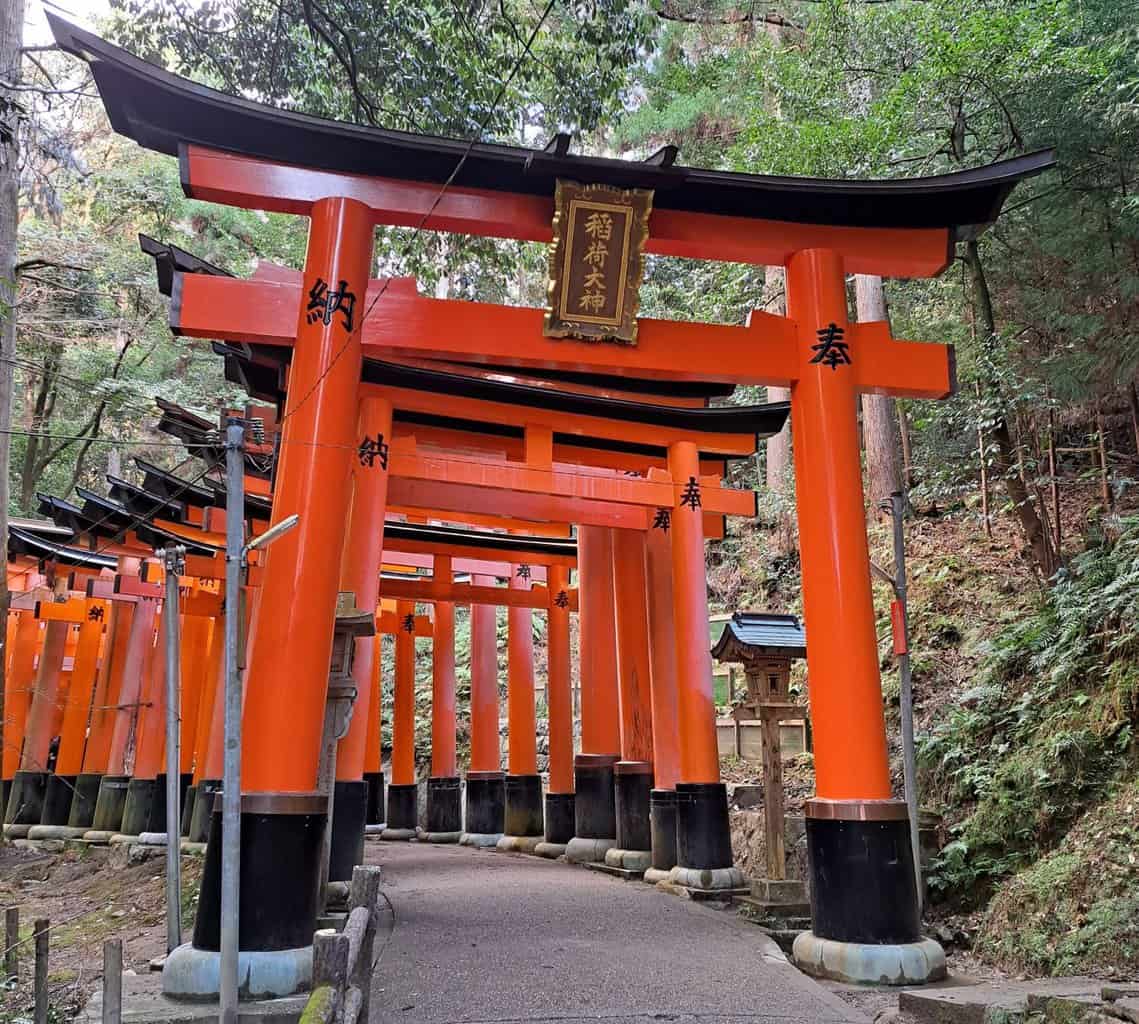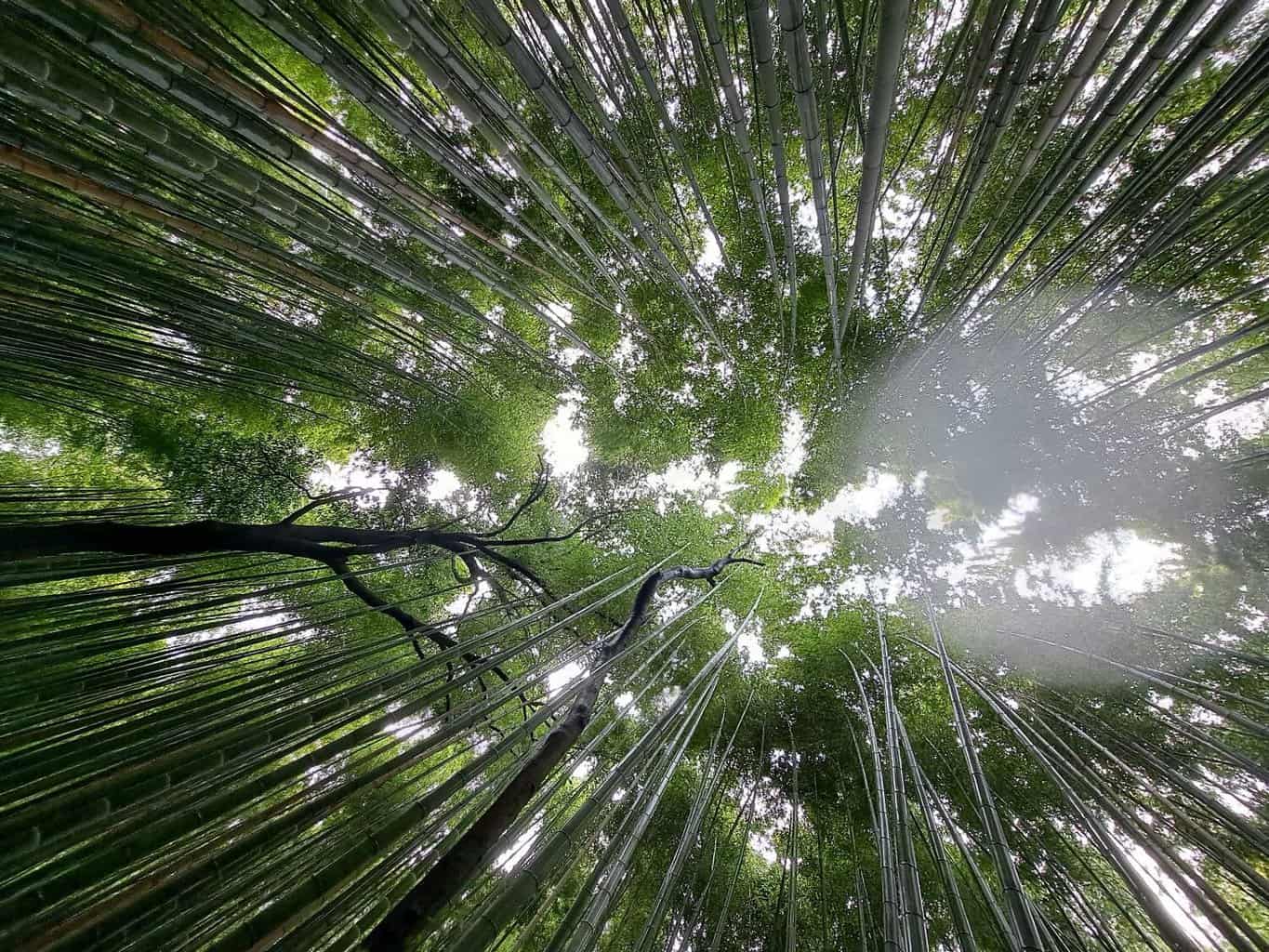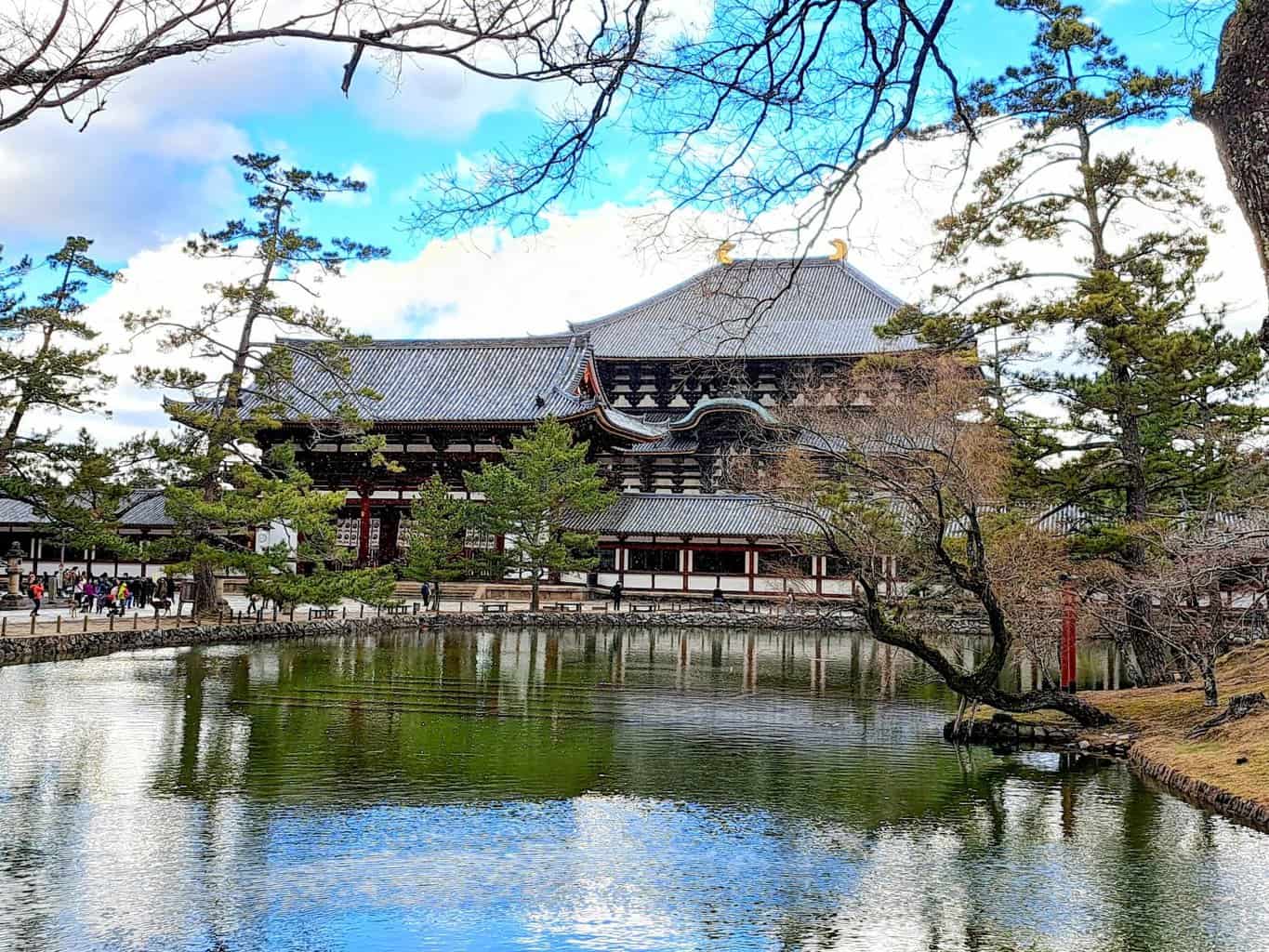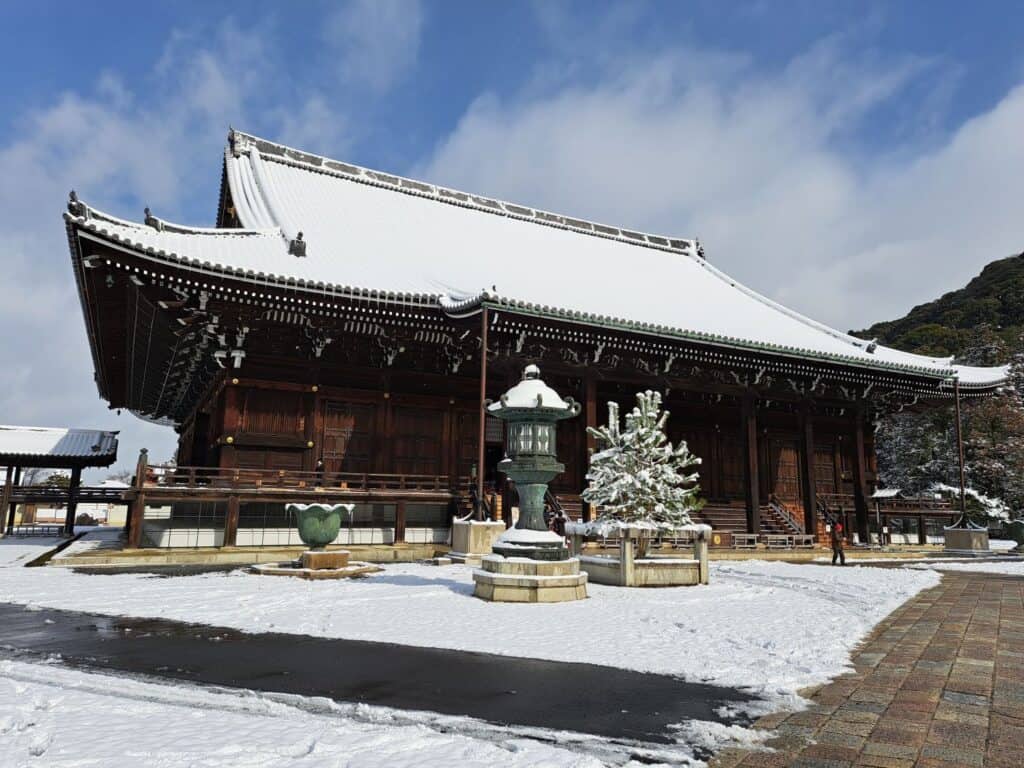
This post may contain affiliate links. I will receive a small commission if you use these links.
Best things to do in Kyoto in 3 days
Kyoto is one of the most popular places to visit in Japan. The small city is full of beautiful temples, traditional Japanese buildings and narrow shopping streets. If it’s your first time visiting Japan, you have to go to Kyoto!
When planning your first trip to Japan, you may be wondering what there is to see and do in Kyoto and how many days you should spend there.
I visited Kyoto as part of a 3 week trip to Japan and spent 3 days in Kyoto. This was my first time in Kyoto (and in Japan) and I managed to fit quite a lot of sights into those three days! To help you make the most of your time, I’m sharing my 3 day Kyoto itinerary, along with practical information about visiting Kyoto.
Table of Contents
Practical information for visiting Kyoto
Before we dive into my 3 day Kyoto itinerary, here’s some useful practical information for planning your trip…
Where is the best place to stay in Kyoto?
If you are visiting Kyoto for the first time, I would recommend staying in the centre of the city. I would also recommend staying close to a train station, especially if you only have 3 days to spend in Kyoto, as many of the sights are spread out.
The best areas to stay in Kyoto for first time visitors are:
- ‘Downtown’ Shimogyo Ward – This is the main shopping and restaurant area in Kyoto, including the Nishiki Market. The famous Ponto-cho Geisha District is also here.
- Nakagyo ward – Home to the Nijo Castle and Kyoto city hall, this is right on the outskirts of Downtown and is a great option if you want to be away from the hustle and bustle, but with good transport links.
- Minami Ward – The area surrounding Kyoto Station
- Higashiyama ward – This is where the Gion and Kiyomizu-dera temples are located, as well as parts of the Geisha district.
Kyoto Accommodation suggestions
Budget accommodation
- Guest House Ga-Jyun – Traditional Japanese guesthouse located between the Shimogyo and Higashiyama wards
- Fujitaya Kyoto – Traditional Japanese guesthouse located in Shimogyo ward
- Wise Owl Hostel – Private and dorm rooms in Minami ward, near Kyoto train station
- Piece Hostel Kyoto – Dorm rooms in Minami ward, near Kyoto train station
Mid-range accommodation
- Stay Sakura Kyoto Suzaku Oji – Private ensuite rooms in Nakagyo ward (this is where I stayed)
- Henn na Hotel Premier Kyoto Gojo Karasuma – Private ensuite rooms in Shimogyo ward
- Hotel Resol Kyoto Kawaramachi Sanjo – Private ensuite rooms on the edge of Shimogyo ward, near the Gion district.
- Hotel androoms Kyoto Shichijo – Private ensuite rooms with free bikes, spa and wellness centre in Shimogyo ward
Luxury / high-end accommodation
- The Royal Park Hotel Iconic Kyoto – 5 star hotel in Nakagyo ward
- The Gate Hotel Kyoto Takasegawa by Hulic – 5 star hotel in Nakagyo ward
- Nohga hotel Kiyomizu Kyoto – 5 star hotel in Higashiyama ward, 1km from Kiyomizu-dera Temple
- Dhawa Yura Kyoto – 5 star boutique hotel in the Gion area of Higashiyama ward
How to get to Kyoto
Travelling by Plane:
The nearest international airport to Kyoto is Kansai International, which is located just outside of Osaka. The easiest way to get from Kansai airport to Kyoto is to take the JR Hansai train direct to Kyoto station. The train will take 1 hour 25 minutes and if you have a JR (Japan Rail) pass, you may be able to use it on these lines, depending on which pass you have purchased.
Travelling by Train:
If you are travelling from Tokyo to Kyoto, then you can take the Shinkansen Bullet train. Note that if you do have a JR pass, you cannot use it on some of the bullet trains, so you may have a longer journey time between the two cities if you need to take the slower trains. This is just something to bear in mind when planning your schedule from Tokyo to Kyoto on the train, so that you don’t lose too much time in Kyoto.
What is the best way to get around Kyoto?
Exploring Kyoto by train:
I always prefer to take the train or metro when exploring a new city as I find them really easy to use. And Kyoto’s underground metro and overground trains are really easy to use, with many of the signs in english. The trains are also the best ways to travel to some of the sights which are further out of the city, such as Arashiyama Bamboo Forest and Nara Deer Park.
Exploring Kyoto by bus:
Kyoto also has a really convenient city bus service. You will need exact change to use the buses (there are usually change machines at the bus stop, but make sure you arrive early as the buses are very punctual!). You can also use certain travel passes, but credit and debit cards are not permitted. You can find more details about the local bus service, including schedules and etiquette on the local website.
Is 3 days enough time to spend in Kyoto?
I’ll be honest, you’re not going to see everything that Kyoto has to offer in just 3 days. However, if you are planning on visiting other areas of Japan during your trip, such as Tokyo, Osaka or Hiroshima, then three days is a good amount of time to spend in Kyoto. You will be able to see several of the main sights and attractions in Kyoto during this time.
Kyoto is a large city, so you will need to plan which sights you most want to see and group the ones that are in the same area to maximise your time here. If you do only have a short amount of time in Kyoto, it would be worth looking into a one day Kyoto tour, where you can see several of the main attractions in just one day.
How long should you spend in Kyoto?
If you can spare a few more days, I would recommend 4 or 5 days in Kyoto. This will give you some extra time to really explore at a more leisurely pace, as well as to see some of the lesser visited attractions. However, as I mentioned above, if you are only in Japan for a short time, then 3 days is a good amount of time.
When is the best time to visit Kyoto?
Kyoto is a great place to visit year-round. The most popular time of year to visit is during the cherry blossom season, which is typically between late March – May. However this time of year can be very busy, especially in the more touristic places. Because of this, accommodation prices can be higher. The autumn months of September – November are a great time to visit Kyoto. Similar to the weather in the Spring, it will be pleasantly warm this time of year, which is perfect for sightseeing.
Summer in Kyoto is hot and humid and is not as pleasant for exploring, so I would avoid this time of year if possible.
Unless you are skiing in Japan, many people will also avoid the winter months as the temperatures can drop considerably. However, I visited Japan in February and had a great time. Despite the cold weather, many places were still quite busy in Kyoto, so I can’t imagine how crowded Kyoto can get during the warmer months. We also had a snow storm and the temples looked beautiful covered in snow and ice, which was a bonus!
(If you do visit Kyoto in the winter, this is the perfect time to make a detour to Nagano to see the Snow Monkeys!)
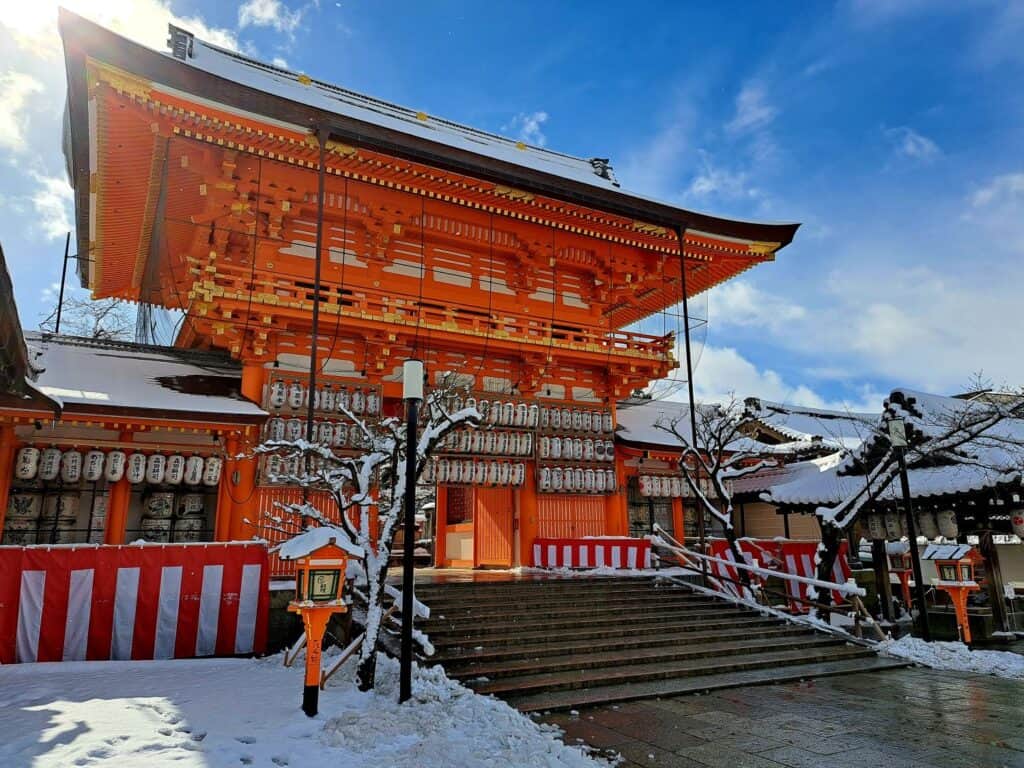
3-day Kyoto itinerary - Best things to do in Kyoto in 3 days
Now we’ve covered some useful tips for visiting Kyoto, let’s dive into my 3 day itinerary, with some of the best things to do in Kyoto in just 3 days:
Day 1: Visit Kiyomizu-Dera and the Gion district
Kyoto is known for having some of the most beautiful and well known temples and shrines in Japan. So, it seems fitting that you would start your first day with a visit to some of the most popular temples in Kyoto
Kiyomizu-Dera temple
Kyoto’s most iconic temple complex is Kiyomizu-dera. This Buddist temple is well known for its wide ranging views over the city, thanks to its elevated position on Mount Otowa.
The temple’s large wooden veranda is held up over the mountainside with huge wooden columns, which is impressive in itself. But not as impressive as the beautiful views! Entrance to the temple and veranda is just 500 yen (£2.65). But you can enjoy a stroll around the grounds for free. There are several other buildings and shrines within the temple complex, surrounded by large traditional gates.
The temple opens at 6am, so you can arrive early if you want to take photos without too many other people.
Sanneizaka shopping street
This is a popular walking street, lined with shops, market stalls and small food shops. This is the route which most visitors take when walking up to Kiyomizu-Dera. It makes the ideal stopping point half way up or down the mountain to purchase a souvenir or two, or enjoy some local treats.
The traditional Japanese architecture here is also really great for capturing photos, but be warned – this is a very touristic place and gets very crowded, so you will need to come here early if you want to take photos without the crowds.
Lunch in Higashiyama ward
After spending the morning visiting Kiyomizu-Dera and strolling through Sanneizaka shopping street, it’s time to head back down the mountain in search of lunch. There are plenty of options in the Higashiyama ward at the base of Sanneizaka. Make sure that you also pass through Ninenzaka. This small pedestrian passageway is known for its traditional Japanese architecture and cherry blossom in the spring months. There are also a few tea houses near here where you can take part in a traditional tea ceremony.
The Gion District
One of the most visited areas of Kyoto is Gion, in the Higashiyama ward. Gion is Kyoto’s geisha district and it is common to pass traditional Geisha hostesses in patterned kimonos walking along the streets. In this area are a range of high end Japanese restaurants, tea houses and boutiques. There are also a couple of performing arts theatres, where you can watch traditional dance shows.
Gion is one of the most touristic areas in Kyoto and there are several places that offer more touristic activities, such as traditional Geisha makeovers and Kimono rental.
The area of Gion and the wider Higashiyama ward is also home to several temples and shrines, so I would suggest spending the afternoon wandering around the temple complexes as you explore this area of the city. Below are three must-see temples around Kyoto’s Gion district:
Kodaiji Temple
This is a pretty, serene temple surrounded by landscaped gardens, on the outskirts of the Gion district. The temple is framed by the tree covered mountains and there are small pathways you can explore through bamboo groves and small ponds. This is a great temple to visit in Kyoto if you want to get some peace and quiet and be surrounded by nature. Entry is 600 yen (£3.20).
Yasaka shrine
After you have visited the Kodaiji temple, walk towards Maruyama city park, where you will find the Yasaka Shrine. This colourful Shinto shrine dates back to 656 AD and many traditional festivals and events are held here. The ancient shrine is free to visit and well worth stopping at as you walk through the park.
Chionin temple
On the other side of Maruyama Park is the Chionin temple. This large 17th century temple is the headquarters of Jodo Shu Buddishm and an important complex within the city of Kyoto. There are several buildings you can visit within the complex, as well as pretty gardens to stroll through. There is no fee to visit Chionin temple and it is open from 09.00 – 3.50pm each day.
Dinner in Gion District
After a lot of walking today, you’ll probably be ready for some delicious food! Save your legs and stay in the Gion district, where you’ll find a wide range of local and international restaurants, including italian, french, steak and vietnamese cuisine. There’s also some great evening food tours around Gion.
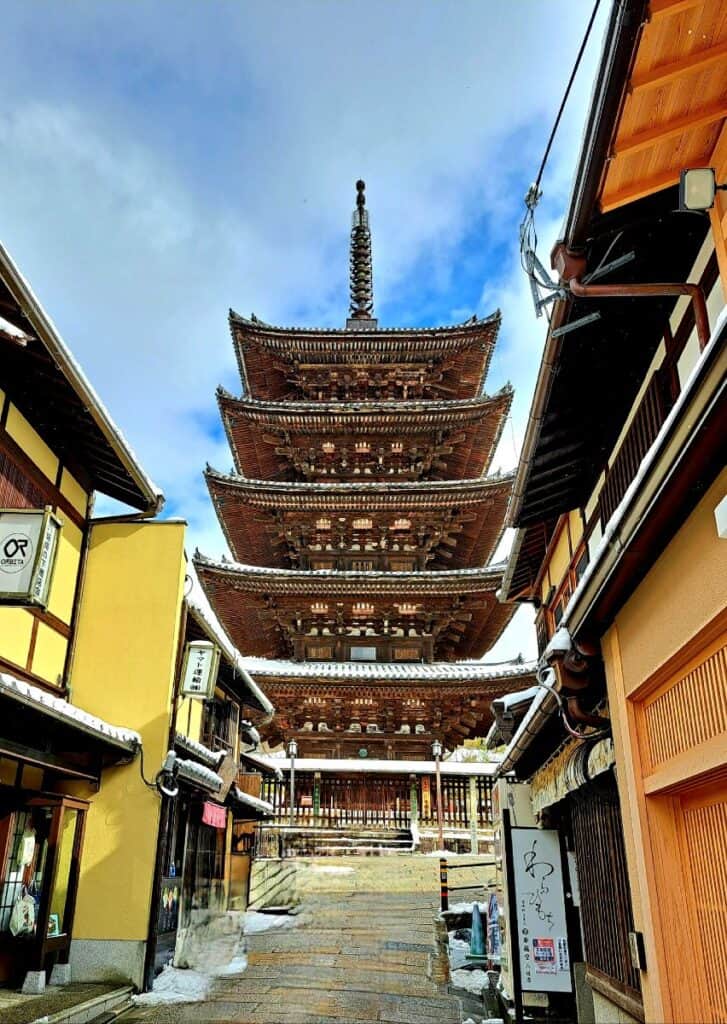
Day 2: Arashiyama Bamboo Forest, Nakagyo ward and Downtown Kyoto
Spend the morning walking through the Arashiyama Bamboo forest, before touring the Nijo Castle, Kyoto Gyoen National Garden & the Imperial Palace. Finally, wrapping up the day with an evening in Downtown Kyoto.
Arashiyama Bamboo Forest
On your second day in Kyoto, get up early and head to Arashiyama to stroll through the Bamboo Forest. The Arashiyama Bamboo Forest is one of the most popular places to visit in Kyoto, especially for photographers. As you would expect for anywhere which is popular, it does get busy, especially in peak season and during the middle of the day. Therefore, to capture the best photos of the Arashiyama Bamboo Forest, I would recommend arriving first thing in the morning. You can get some really beautiful photos just after sunrise. If you’re not an early morning person, then late afternoon or early evening is also a great time to visit, when most of the crowds have departed.
The walk through the bamboo forest is only 400m long, but you can continue walking into Arashiyama park, with views over the Katsura river. After you have enjoyed a stroll through the forest and park, you will arrive at the Tenryu-ji temple. The temple is surrounded by pretty landscaped gardens and is worth a wander. There is no entrance fee for the Arashiyama Bamboo Forest and Park, however there is a small fee of 500 yen (£2.70) to enter the Tenryu-ji temple.
Have lunch in Arashiyama
Arashiyama main street is full of shops, restaurants and traditional tea houses. There are lots of places to stop and enjoy a leisurely lunch here. However, if you are traveling on a budget, there are some great low cost options, too. In the Arashiyama tram stop there are some street food stalls and a couple of seats, as well as public toilets. Also at the tram station is the ‘Kimono Forest’ – a small art installation where you’ll find visitors taking photos in front of the illuminated pillars, covered in beautiful kimono fabric.
Nijo Castle
After lunch in Arashiyama, head back towards the centre of Kyoto to visit Nijo Castle. If you’re using your JR pass, you can take the San in Line train from Arashiyama-Sage direct to Nijo station. From there the castle entrance is just a short 10 minute walk away. Nijo castle was the residence of the Tokugawa shoguns, a government-military group who ruled Japan during the Edo period from 1603 to 1868. The traditional, ornate buildings and landscaped gardens are beautiful to walk around.
Entry to Nijo castle is 800 yen (around £4.10) for adults and you can purchase your ticket at the main entrance in cash. You may also want to book a guided tour to learn more about the castle and this period of Japan’s history.
Kyoto Gyoen National Garden & Imperial Palace
After you have visited the Nijo castle, take a 20 minute walk to the Kyoto National Garden. There is no entry fee to visit the gardens, making this one of the best free things to do in Kyoto, especially on a warm summer day. Kyoto’s Imperial Palace resides in the centre of the garden, and if you plan to visit both the Nijo Castle and the Imperial Palace, you can join a combined guided tour of them both.
Catch the sunset from Nidec Kyoto Tower
As the day draws to an end, catch the sunset from the Nidec Kyoto Tower. The 100m tall observation deck offers impressive 360 views over the city. From here, you can also see some of Kyoto’s best attractions, including the Kiyomizu-Dera Temple and Toji Temple. The observation deck is open from 10:00 – 21:00, however it is even more special as the sun sets.
The Kyoto Tower is one of the best things to do in Kyoto and tickets are just 900 yen (£4.70) for adults, which is great if you are visiting Japan on a budget!
Dinner in downtown Kyoto
After watching the sunset from Nidec Tower, it’s time to enjoy some food. Luckily, you wont need to walk too far, as there are lots of options around Kyoto station and the Nidec Tower. You’ll find quite a few higher end restaurants in this area, however if you are looking for something more casual and a bit cheaper, don’t worry, there are lots of local Izakaya bars too.
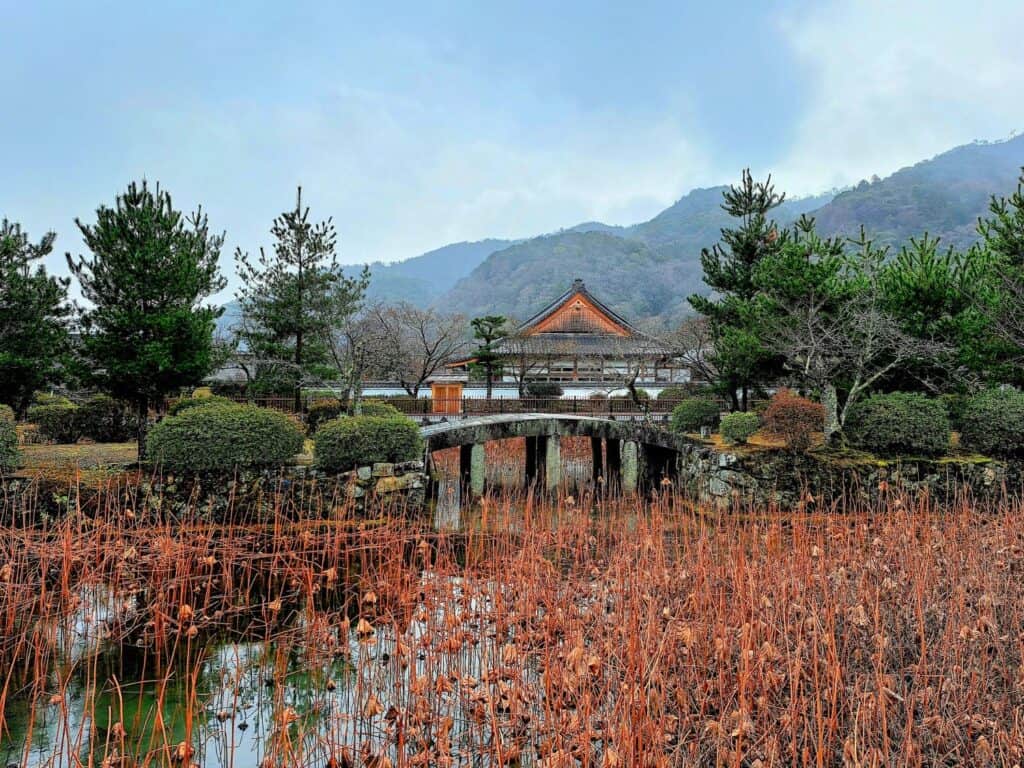
Day 3: Fushimi Inari shrine and Nara Deer Park
On your final day in Kyoto, we are venturing a little outside the city, starting with a visit to the famous Fushimi Inari shrine.
Fushimi Inari shrine
The Fushimi shrine is one of the most visited attractions in Kyoto and I discuss some top tips for visiting the Fushimi shrine in this post. It is most well known for its iconic red Torii gates which make a winding path up the mountain. The gated path is 5km long, and will take 2-3 hours, if you walk all the way to the top of Mount Inari. However, many visitors will just walk the first section, which takes just 45 minutes. If you want to get some great photos without lots of other people in the background, I would really recommend walking a bit further up the mountain. Most people stop after the first section, so there will be fewer crowds the further up you go.
There is no fee for visiting the Shrine, and the best time to visit is either first thing in the morning, or early evening when there are fewer crowds.
Nara & Nara Deer Park
Spend the afternoon in Nara. First, enjoy lunch then spend a few hours wandering around the park.
Getting to Nara from Kyoto
From Fushimi-Inari station, you can take the Nara line direct to Nara station, which will take just over 1 hour. If you have a JR pass, you may be able to use your ticket on this line, depending on which pass you purchased.
The walk from Nara train station to the entrance of Nara Park is just 20 minutes. There are also local buses which will take you to the entrance also.
Lunch in Nara
There are so many places to grab some lunch in Nara. If you want to sit down and have a more leisurely lunch, then there are many restaurants surrounding both Nara Train station and also Kintetsu-Nara station. However, if you are travelling on a budget, or want something small or on the go, keep walking towards the park. On the streets surrounding the edges of the park, there are often street food stalls selling local treats and snacks, as well as shops selling souvenirs. Just watch out for the deer who frequently try their luck and will attempt to steal your food!
Nara Deer Park
Nara Deer Park is one of the most popular day trips from Kyoto, and also from Osaka. It has been made famous by the cute (and often very cheeky!) deer that roam freely around the park. It is also free to visit the park and wander the grounds, making it a great free thing to do in Kyoto.
Nara Park is a great place to visit any time of year. I visited in February and although it was a little cold, it was still pretty to wander around. It does get quite busy and despite visiting out of season, there were still a lot of other visitors when I went in the winter. However, as the park is large, it never felt crowded.
In addition to the sacred deer in the park, there are lots of other things to do in Nara Park, which I cover in more detail in this post, to help you make the most of your day trip to Nara. Scattered around the park are numerous temple buildings and shrines, as well as several museums. Some of the museums and temples do have a small entrance fee, but it varies depending on each site.
Spend the evening at Nishiki market
On your final evening in Kyoto, head to the popular Nishiki Market. This indoor, covered market is one of the best places to visit in the centre of Kyoto. The iconic market has been open for 400 years and is home to a wide collection of shops, market stalls and food outlets. If you’re more of a morning person, Nishiki market is also one of the most popular places in Kyoto to join a morning food tour. There are also several Saki shops, where you can sample different variations of the Japanese drink.
The food outlets here are small and offer mostly takeaway options, however there are some where you can sit down and enjoy some food. If you are looking for something more substantial, or want to enjoy a more peaceful evening meal, there are plenty of options nearby, including Pontocho Park restaurant alley.
This cute, narrow alley is tucked away from the hustle and bustle of the main street and is lined with traditional Japanese style restaurants and bars. You can find a range of cuisines here, from Japanese BBQ and sushi to local Izakayas and international food. The restaurants along this alley are intimate and unassuming and a stark contrast to the bright lights of the main downtown retail area.
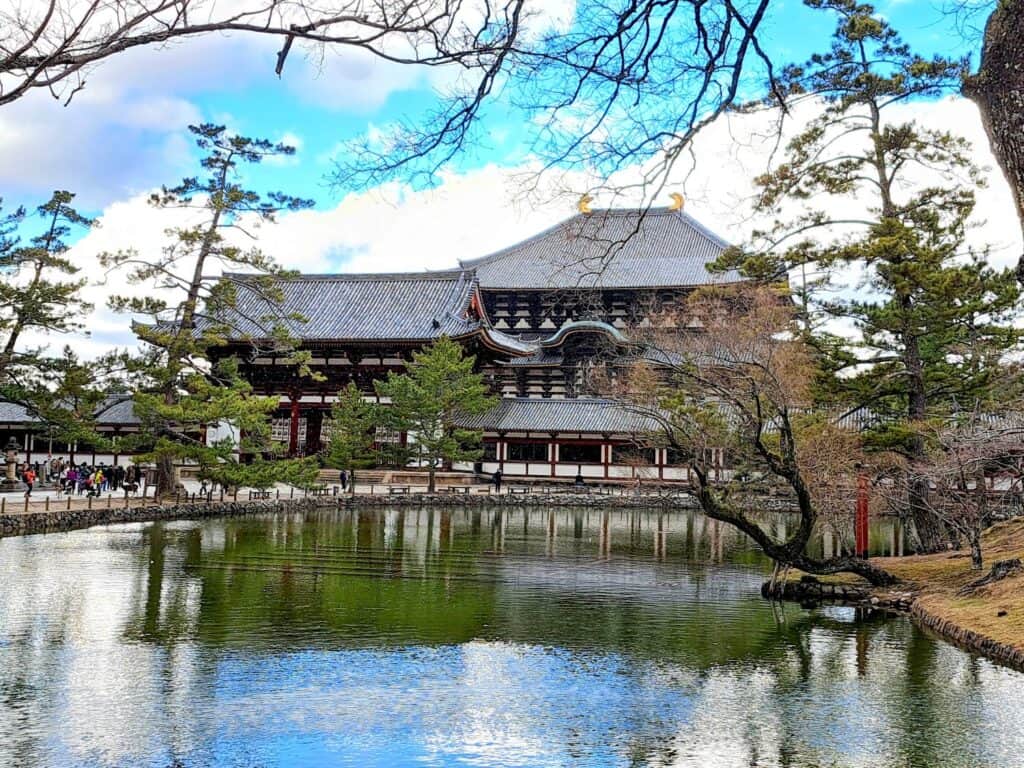
So that wraps up my 3 day Kyoto itinerary. Kyoto is a great place to visit for families, couples and solo travellers, as there is so much to do and something for everyone. It is also well connected with other cities in Japan, so you can easily incorporate a visit to Kyoto within your Japan itinerary.

